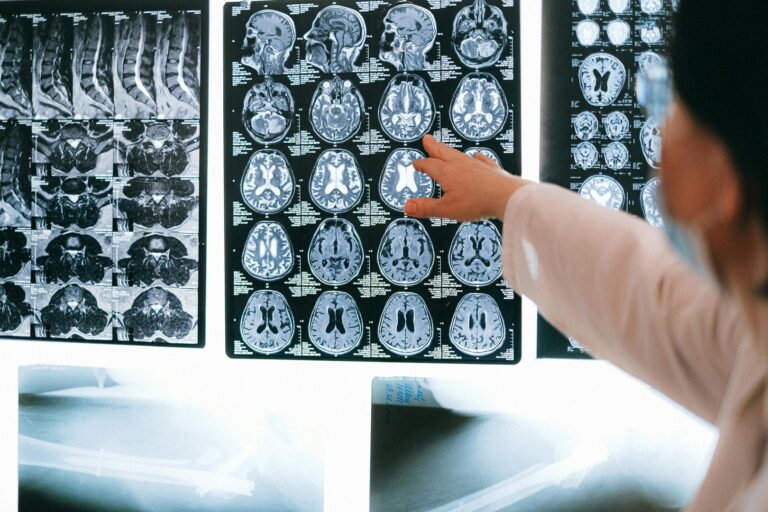According to their practice, the established MRI descriptors used to detect IIH are:
- Vertical tortuosity of the optic nerves-how curvy the nerve of the eye is
- Yuh score(2)
- Inconspicuous subarachnoid spaces-difficulty in detecting normally seen space of the brain
- Enlargement of the optic nerve sheaths-larger than usual covering of the optic nerve
- Globe flattening-flattening of the eye structures
- Meckel’s cave cross-sectional area
To view some examples of these MRI findings, click here to view the webinar on MRI findings with IIH given by neuroradiologist, Dr. Andrew Kim.
In this retrospective study, neuroradiologists incorporated additional MRI descriptors, called exploratory descriptors, to determine if they added value in the ability to detect IIH.
“Exploratory descriptors were selected if they had been anecdotally linked with IIH or with similar underlying mechanisms to established descriptors or evaluating a preferential distribution of body fat which has been purported to be the case in IIH.”(1)
The additional exploratory descriptors used in this study are:
“The intriguing finding of a narrow SSS may be a cause or result of the raised ICPincreased intracranial pressure Click the term to read more in a similar way to that speculated with the better described transverse sinus stenoses.”(1) “The advantage of this imaging sign is that it is easily recognized on routine T2w axial sequences due to the perpendicular course of the SSS to the axial plane in its distal third. The finding of widened lower cranial nerve meati may result from increased transmission of CSFFluid that is made by specialized cells in the ventricles of the brain. Click the term to read more in the context of chronically raised ICP in a similar way to that observed in the optic nerve sheath and Meckel’s cave.” (1)
After a review of 54 patients with confirmed IIH, the researchers learned that the addition of these 8 exploratory MRI descriptors did add value to making the diagnosis of IIH. Identifying vertical tortuosity of the optic nerve, enlarged optic nerve sheath, globe flattening, looking at the Yuh score, increased cervical skin folding, and increased cervical fat thickness optimally predicts IIH.
Of note, MRI findings of cerebellar tonsillar descent and slit-like ventricles only had a less than 20% sensitivity for IIH. In other words, if these findings are seen on an MRI it does not always mean the patient has IIH.
The authors would like to note some of the limitations of their study. As this is a retrospective study, helpful information was not available such as the BMIA value derived from the mass (weight) and height of a person. A healthy range is between 18.5-24.9, overweight is defined as 25-29.9 and obese… Click the term to read more of the patient, previous imaging, and other demographics. Some patients were on acetazolamideMedication used to treat glaucoma, epilepsy, altitude sickness, periodic paralysis, idiopathic intracranial hypertension, urine alkalinization, and heart failure. Click the term to read more which may affect the ability to see some abnormalities in the MRI descriptors, and lastly neuroradiologists cannot look at every single feature available to MRI. It is up to the clinician to help guide the radiologist to help decide if these features should be utilized or not.
To read the full article, click here.



